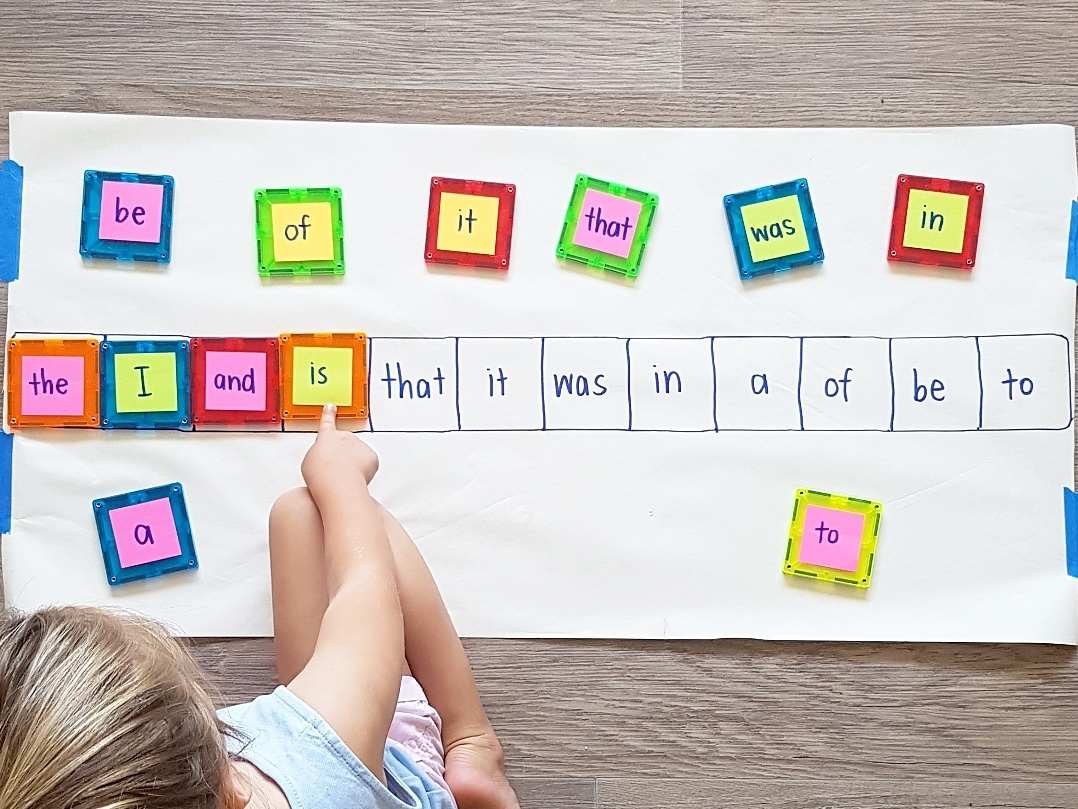Why Sight Words Matter
When children begin their journey into reading, sight words become the foundation of their literacy skills. Sight words for kindergarten are high-frequency words that children must recognize instantly without needing to decode. Words like the, and, to, is, and you may not follow standard phonics rules, but they appear repeatedly in books, lessons, and everyday reading materials.
Mastering sight words empowers young learners to read with fluency and confidence. Teachers and parents alike recognize the importance of kindergarten sight words worksheets, flashcards, and free sight words activities in supporting early literacy development.

What Are Sight Words?
Sight words are common words that children are encouraged to memorize as a whole by sight, rather than sounding them out. These words often do not follow typical spelling rules, making them difficult for beginning readers to decode.
Two of the most widely used lists are:
-
Dolch Sight Words for Kindergarten – Developed by Dr. Edward Dolch, this list includes 220 service words that children encounter most often.
-
Fry Sight Words – A more modern list that extends to the 1,000 most frequently used words in English.
Learning sight words helps young readers focus on comprehension rather than struggling to decode every word.
Benefits of Teaching Sight Words in Kindergarten
Teaching sight words early offers multiple benefits:
-
Reading Fluency – Recognizing words instantly allows children to read smoothly and quickly.
-
Confidence Building – Mastery of sight words motivates children to continue reading independently.
-
Improved Comprehension – When decoding is reduced, children can focus on understanding the meaning of the text.
-
Stronger Vocabulary – Exposure to sight words boosts early literacy development and prepares students for first grade.

Common Sight Words Lists: Dolch, Fry, and More
For kindergarten, the most common lists include:
-
Dolch Sight Words for Kindergarten: about 40–50 words, including a, I, can, go, we, see, play, run, up, down.
-
Fry First 100 Words: words like the, of, and, in, it, to, he, you, was, for.
Teachers often combine both lists to ensure children are prepared for higher reading levels. Using kindergarten sight words worksheets aligned with these lists ensures structured practice.

Effective Ways to Teach Sight Words
While memorization plays a big role, sight words should be introduced through fun, interactive, and consistent practice. Here are some proven strategies:
1. Games and Activities
-
Sight word bingo
-
Memory card games
-
Word hunts in books or around the classroom
2. Printable Sight Words Flashcards
Printable flashcards allow repetition and hands-on learning. Teachers can use them in small groups, while parents can reinforce learning at home.
3. Repetition and Exposure
Frequent exposure across different settings helps children internalize sight words faster.
4. Worksheets and Printables
No prep sight words worksheets and sight words printables allow children to practice tracing, reading, and writing words in a structured way.

Why Worksheets & Printables Work Best
Worksheets and printables are among the most effective tools for teaching sight words. Here’s why:
-
Visual Support: Sight words printables often include pictures and colorful designs that capture children’s attention.
-
Hands-On Practice: Tracing, coloring, and writing engage multiple senses.
-
Flexibility: Worksheets can be used in class, at home, or in tutoring sessions.
-
No Prep Needed: Teachers love the simplicity of no prep sight words worksheets—they can print and use them instantly.
How to Use Sight Words Worksheets in Class & at Home
Here are some practical tips:
-
In the Classroom: Use worksheets during literacy centers, morning warm-ups, or homework. Pair them with sight words games for reinforcement.
-
At Home: Parents can assign a few worksheets each week. Pair them with printable sight words flashcards for daily review.
-
Interactive Practice: Encourage students to highlight or circle sight words in books or even on signs during a walk.

Tips for Parents Supporting Kindergarten Sight Words Learning
Parents play a huge role in literacy development. Here are some ideas to help:
-
Read Together Daily – Point out sight words while reading bedtime stories.
-
Use Flashcards – Review just a few words at a time.
-
Create a Word Wall – Display new sight words in a visible place at home.
-
Celebrate Progress – Give small rewards or encouragement when children master new words.
Where to Get the Best Sight Words Printables
Finding quality resources is essential for both teachers and parents. The best kindergarten sight words worksheets are:
-
Printable and Ready-to-Use – No need for complicated prep.
-
Engaging and Fun – Include games, tracing, and coloring.
-
Curriculum-Aligned – Based on Dolch sight words for kindergarten and Fry’s first 100 words.
-
Versatile – Suitable for classrooms, homeschoolers, and tutoring sessions.

Sight words for kindergarten form the cornerstone of early reading success. By mastering these high-frequency words, children gain confidence, fluency, and a love for reading. Worksheets, printables, and flashcards are powerful tools that make sight word learning effective and enjoyable.
Teachers and parents looking for ready-made, engaging resources can access a full set of worksheets designed to make teaching sight words easy and fun.
Preview and download the Sight Words Worksheets





GIPHY App Key not set. Please check settings